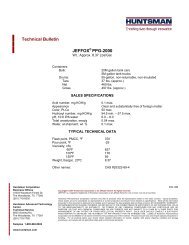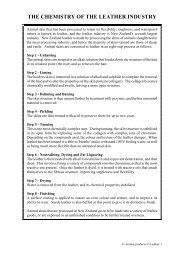You also want an ePaper? Increase the reach of your titles
YUMPU automatically turns print PDFs into web optimized ePapers that Google loves.
BATON SIGNALS<br />
BATON SIGNALS<br />
Actions that emphasize the rhythm of words<br />
Ba<strong>to</strong>n Signals beat time <strong>to</strong> the rhythm of spoken thoughts. <strong>The</strong>ir<br />
essential role is <strong>to</strong> mark the points of emphasis in our speech, and<br />
they are so much an integral part of our verbal delivery that we<br />
sometimes gesticulate even when talking on the telephone.<br />
Ba<strong>to</strong>ns account for the bulk of the gesticulations that accompany<br />
conversation or public speaking. An animated speaker's<br />
hands are seldom still, but flick, swish and dip as he conducts the<br />
'music' of his words. He is only half conscious of these movements.<br />
He knows his hands are active, but ask him for an exact<br />
description of his Ba<strong>to</strong>n Signals and he will be unable <strong>to</strong> give it.<br />
He will admit <strong>to</strong> 'waving his hands about', but there the description<br />
will end. Show him a film of himself ba<strong>to</strong>ning <strong>to</strong> his speech<br />
and he will be surprised <strong>to</strong> see that his hands perform a veritable<br />
ballet of airborne movements and shifting postures.<br />
It is these posture changes that are of special interest. If Ba<strong>to</strong>n<br />
Signals did no more than beat time <strong>to</strong> words there would be little<br />
<strong>to</strong> say about them. But each time-beat is performed with the hand<br />
in a particular position and these positions vary from occasion <strong>to</strong><br />
occasion, from person <strong>to</strong> person, and from culture <strong>to</strong> culture.<br />
<strong>The</strong> beating of the hand says: 'This is the point I am making, and<br />
this, and this.' <strong>The</strong> posture of the beating hand says:'... and this<br />
is the mood in which I am making these points'. It is possible <strong>to</strong><br />
make a detailed classification of these beating postures and then<br />
<strong>to</strong> study their natural his<strong>to</strong>ry in the field. Here are some of the<br />
most important types:<br />
1. <strong>The</strong> Vacuum Precision-grip. <strong>The</strong> human hand has two basic<br />
holding actions - the precision-grip and the power-grip. In the<br />
78<br />
[<br />
precision-grip it is the tips of the thumb and fingers that are<br />
used; in the power-grip the whole hand is involved. We employ<br />
the precision-grip when holding small objects delicately and<br />
manipulating them with accuracy, as when writing or threading<br />
a needle. When ba<strong>to</strong>ning during speech, we often adopt a<br />
precision-grip hand posture, even though the hand in question is<br />
empty. In other words, we perform the precision-grip in vacuo.<br />
This form of ba<strong>to</strong>n reflects an urge on the part of the speaker <strong>to</strong><br />
express himself delicately and with great exactness. His hand<br />
emphasizes the fineness of the points he is stressing.<br />
<strong>The</strong>re are two popular versions of the Vacuum Precision-grip:<br />
the Hand Purse and the Thumb-and-forefmger Touch. In the<br />
Hand Purse the tips of all five digits are brought <strong>to</strong>gether until they<br />
<strong>to</strong>uch in a tight circle, like the mouth of a string-closed purse.<br />
In the Thumb-and-forefinger Touch, the tips of only these two<br />
digits are brought in<strong>to</strong> contact with each other. This appears <strong>to</strong><br />
be the most popular form of the Vacuum Precision-grip, requiring<br />
slightly less muscular effort than the Hand Purse.<br />
2. <strong>The</strong> Intention Precision-grip. In this ba<strong>to</strong>n posture, the hand<br />
makes the intention movement of delicately taking hold of an<br />
imaginary, small object, but does not follow the action through<br />
<strong>to</strong> the point where the thumb-tip and fingertips meet. It is an Air<br />
Hold posture and the mood it reflects is more one of a quest for<br />
precision than precision itself. <strong>The</strong>re is usually an element of<br />
questioning or uncertainty on the part of the gesticula<strong>to</strong>r, as if he<br />
is searching for 'something. <strong>The</strong> hand, beating the air, almost<br />
closes on the answer, but not quite.<br />
3. <strong>The</strong> Vacuum Power-grip. We employ the power-grip for crude,<br />
forceful manipulations such as grasping or hammering. <strong>The</strong><br />
digits are curled tightly around the held object. When this is done<br />
in vacuo, the result, in mild cases, is a bent hand and, in strong<br />
cases, a tight fist.<br />
In the Hand Bend posture the curled fingers only lightly <strong>to</strong>uch<br />
the palm. This is a rather insipid ba<strong>to</strong>n posture, reflecting neither<br />
precision of thought, nor forcefulness. <strong>The</strong> Tight Fist, in contrast,<br />
although it lacks delicacy, does signal considerable determination<br />
and strength of thought.<br />
79


![Desmond Morris - 2002 - Peoplewatching - The Desmond Morris Guide to Body Language (poor quality-double page)(290p) [Inua]](https://img.yumpu.com/54998318/50/500x640/desmond-morris-2002-peoplewatching-the-desmond-morris-guide-to-body-language-poor-quality-double-page290p-inua.jpg)

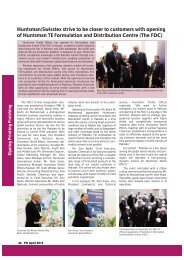

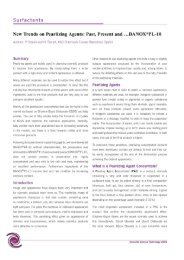

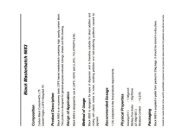


![[Ulwick_A.W.]_Business_Strategy_Formulation_Theor(BookZZ.org)](https://img.yumpu.com/56355932/1/190x240/ulwick-aw-business-strategy-formulation-theorbookzzorg.jpg?quality=85)

